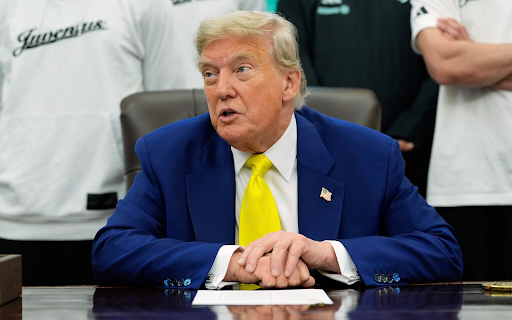Donald Trump said of possible military action against Iran: ‘I may do it, I may not do it. The next week is going to be very big, maybe less than a week.
🕒 What the White House Said
White House Press Secretary Karoline Leavitt announced on June 19, 2025, that President Trump will decide “within the next two weeks” whether to deploy U.S. military force against Iran, potentially joining Israel’s ongoing air campaign . The timing hinges on whether diplomatic talks yield tangible progress—“a substantial chance” of negotiations remains in motion.
Strategic Tension: Diplomacy vs Military Action
Trump’s decision reflects a balancing act between diplomacy and force:
-
Diplomatic route: Trump hopes to secure an agreement that halts uranium enrichment and halts Iran’s nuclear weapon capabilities .
-
Military readiness: If diplomacy fails, U.S. involvement—including strikes on fortified facilities like Fordow using bunker-buster weapons—is on the table.
Why the Two-Week Window
This deadline echoes Trump's pattern of issuing time-bound ultimatums that often pivot. Critics highlight previous delays on Russia, Ukraine, and trade. Senator Chris Murphy called the “two weeks” timeline “just … to pretend he might be doing something he's not”.
Risks & Calculations
Key factors shaping the decision:
-
Targeting Iran’s nuclear capabilities
-
The Fordow enrichment site is deeply buried; U.S. Massive Ordinance Penetrators (MOPs) may be required. Israel lacks such capabilities.
-
-
Learning from Libya
-
Trump reportedly fears a Libya-style power vacuum if Iran's leadership is destabilized.
-
-
Regional escalation
-
Iran has threatened "all-out war" if the U.S. intervenes. Global partners like the UK, Germany, China, and Russia urge restraint.
-
-
Domestic politics and legal constraints
-
Congress and public opinion are divided. New bipartisan legislation seeks to require Congressional approval before military involvement .
-
Diplomacy Still in Play
Trump’s envoy Steve Witkoff has been in communication with Iran’s Foreign Minister Abbas Araghchi, and negotiations involving European officials are underway—possibly offering a path to de-escalation
 | |
| Iran’s Supreme Leader Ayatollah Khamenei has ruled his country since the 1980s. |
✅ Military Intervention
-
U.S. airstrikes could significantly damage Iran's nuclear program—but risk triggering Iran’s military response, broader regional war, and potential civilian casualties.
🤝 Diplomatic Resolution
-
Successful negotiations could yield a renewed framework to curb Iran’s nuclear ambitions, de-escalate tensions, and possibly spare military engagement.
⚖️ Political Fallout
-
A dramatic shift could influence U.S. foreign policy credibility, divide Congress, impact public support, and define Trump’s legacy on international engagement.
🌍 Allies & Opposition
-
Global powers are watching: support for sanctions or diplomatic initiatives, or outright opposition to military escalation, may shape Trump’s path.
Final Assessment
President Trump’s looming deadline is a high-stakes juncture. It pits diplomatic overtures against the possibility of joining an intense military campaign. Choosing force could mark the most significant U.S. intervention in the region since 2003; choosing diplomacy may offer a safer, though uncertain, path. The next two weeks will define America’s posture on nuclear threats, global alliances, and the future of Middle East stability.


